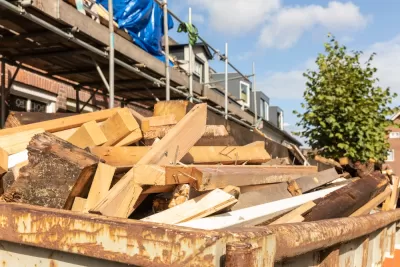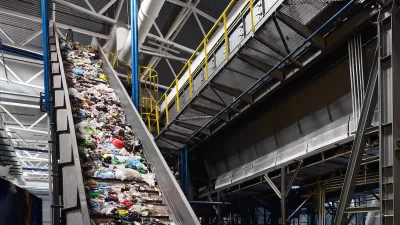A growing movement seeks to reduce waste in the construction industry and focus on the long-term impact of building materials.

Buildings may seem like a lasting investment, yet the construction industry creates roughly one-third of the world’s waste. To address this, researchers and architects are looking for ways to design buildings to be more sustainable, adaptable, and recyclable through a process known as ‘circular building.’ Nicole Gull McElroy describes the movement in Wired.
Circular building is “the practice of making buildings that can be more easily disassembled, moved, or repurposed” and built with reusable materials. “While circular construction and design for disassembly is often practiced on a smaller scale, many architects and designers are pushing the idea forward and testing the limits of what’s possible with larger projects.”
The article describes several examples of projects designed to expand on circular building and bring it into mainstream design practices, aided in some cases by public policy. Los Angeles requires that 65 percent of construction waste be recycled. “Portland, Oregon, was the first to enact deconstruction ordinances and waste removal strategies in 2016. Milwaukee followed in 2017.” And the Office of Historic Preservation in San Antonio, Texas created a Deconstruction and Circular Economy Program, which focuses on the link between preservation, deconstruction, and affordable housing. According to program manager Stephanie Phillips, the process is about “reversing the dependency on replacement products and the widespread disposal of valuable cultural assets while maintaining local cultural identity and a key source of generational wealth for our longtime residents: their homes.”
FULL STORY: Hey Man, Can I Use That Building When You’re Done With It?

Planetizen Federal Action Tracker
A weekly monitor of how Trump’s orders and actions are impacting planners and planning in America.

DARTSpace Platform Streamlines Dallas TOD Application Process
The Dallas transit agency hopes a shorter permitting timeline will boost transit-oriented development around rail stations.

Congressman Proposes Bill to Rename DC Metro “Trump Train”
The Make Autorail Great Again Act would withhold federal funding to the system until the Washington Metropolitan Area Transit Authority (WMATA), rebrands as the Washington Metropolitan Authority for Greater Access (WMAGA).

Supreme Court Ruling in Pipeline Case Guts Federal Environmental Law
The decision limits the scope of a federal law that mandates extensive environmental impact reviews of energy, infrastructure, and transportation projects.

Texas State Bills to Defund Dallas Transit Die
DART would have seen a 30% service cut, $230M annual losses had the bills survived.

Bikeshare for the Win: Team Pedals to London Cricket Match, Beats Rivals Stuck in Traffic
While their opponents sat in gridlock, England's national cricket team hopped Lime bikes, riding to a 3-0 victory.
Urban Design for Planners 1: Software Tools
This six-course series explores essential urban design concepts using open source software and equips planners with the tools they need to participate fully in the urban design process.
Planning for Universal Design
Learn the tools for implementing Universal Design in planning regulations.
Roanoke Valley-Alleghany Regional Commission
City of Mt Shasta
City of Camden Redevelopment Agency
City of Astoria
Transportation Research & Education Center (TREC) at Portland State University
US High Speed Rail Association
City of Camden Redevelopment Agency
Municipality of Princeton (NJ)





























